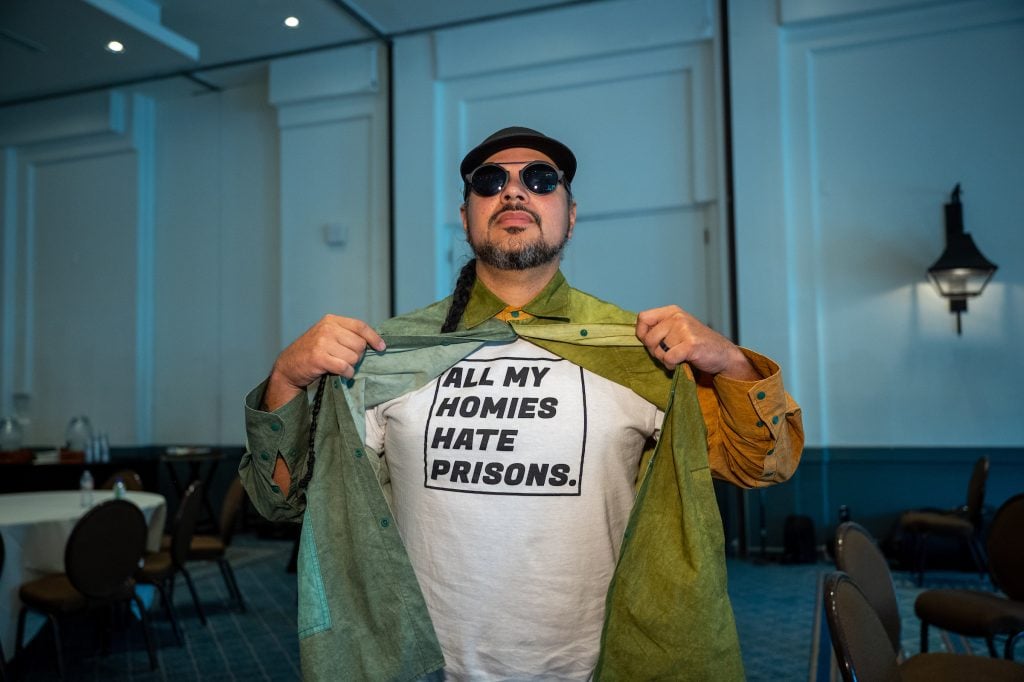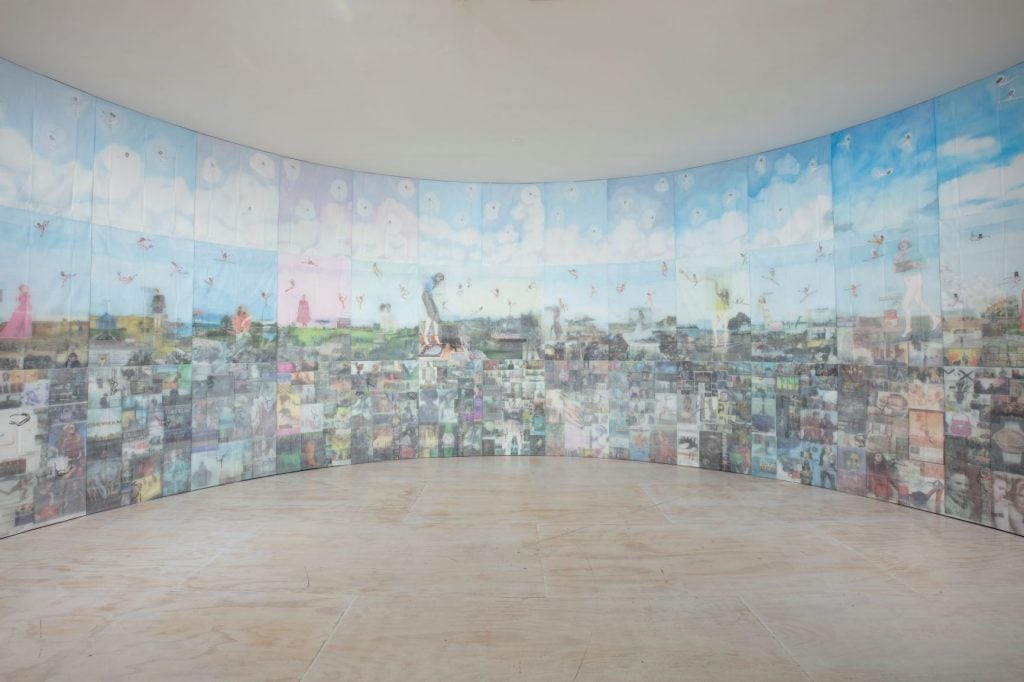Art World
Artist Jesse Krimes Is Heading Up a New Nonprofit to Help Formerly Incarcerated Artists Find Creative Careers
The organization was founded with a major gift from Agnes Gund’s Art for Justice Fund.

The organization was founded with a major gift from Agnes Gund’s Art for Justice Fund.

Taylor Dafoe

In 2017, Agnes Gund sold Roy Lichtenstein’s prized Masterpiece (1962) painting to launch the Art for Justice Fund, a temporary fellowship supporting artists working to reform the criminal justice system. After dolling out $125 million in grants over the course of six years, the initiative is now winding down—but its mission will live on.
As a last act, Gund’s fund has provided a major grant for the establishment of the Center for Art and Advocacy, a non-profit dedicated to mentoring justice-impacted creatives. It was founded by Jesse Krimes, an artist and organizer who was himself previously incarcerated, and is an outgrowth of the Right of Return Fellowship, which he cofounded in 2017.
Moving forward, that fellowship will become one of the new organization’s three central components, along with a residency in northeast Pennsylvania and an education-focused “academy.” Employees will work out of the center’s headquarters in Brooklyn’s Bed-Stuy neighborhood, set to open this fall.
Krimes, who will lead the center as its inaugural executive director, says artists who lose access to art practices while incarcerated frequently struggle to get it back after being released.
“So much of being an artist is finding the time and space to dream and think and create. If you’re constantly mired in just pure survival mode, it makes it very difficult to find that time and resources are always an issue,” he said.

Russell Craig [left] and Jesse Krimes [right] at the 2022 Right of Return Retreat in Arizona. Photo: Maurice Sartirana. Courtesy of the Center for Art & Advocacy.
The center is based on a “restorative model,” he said, and is not meant to compete with other, more established fellowship and residency programs like NXTHVN or MacDowell.
“We’re literally trying to create the space to level the playing field for our artists so that they can then go on and get gallery representation and get these amazing residencies and get these other great fellowships.”
Just how much the Art for Justice Fund gave the upstart Center for Art and Advocacy is unclear. (“Out of concern for the privacy of current and past awardees, particularly those who may be presently incarcerated,” the fund has a policy against sharing grant figures.) But Krimes hinted at the impact of the gift: It’s “basically going to allow us to go from serving six artists annually to close to 250 or 300 artists a year,” he said.
Today’s announcement marks the culmination of years of work for the new director, who served a nearly six-year sentence for cocaine possession after graduating from art school in 2009. While incarcerated, Krimes developed a system of transferring magazine images onto prison-issued bedsheets. Eventually, the scope of his practice grew and he began holding creative workshops for other inmates.
Upon being released, Krimes partnered with fellow artist Russell Craig to founded Right of Return, which provides $20,000 grants to half a dozen artists per year. Former fellows have gone on to receive Pulitzer Prizes, Guggenheim Fellowships, and MacArthur “Genius” grants.

Installation view of Jesse Krimes, Apokaluptein 16389067 (2010–2013) in the exhibition “Marking Time: Art in the Age of Mass Incarceration.” Courtesy of MoMA PS1. Photo: Matthew Septimus.
The Center for Art and Advocacy’s board, which Krimes said is “still in development,” includes a healthy mix of members from the art world and beyond. Current trustees include Craig; Kate Capshaw, an artist; Kate Fowle, a curatorial senior director at Hauser and Wirth; Stephanie Ingrassia, a collector and Brooklyn Museum trustee; Daveen Trentman, a co-founder of the Soze Agency strategy firm; and Dwayne Betts, a lawyer, poet, and one-time Right of Return fellow.
“[We’re] trying to do a board differently,” said Krimes, noting that he wanted a collection of people that “believe in the mission of the work that we’re doing and is open to creative problem solving.”
“Business as usual is not going to get us to the world that we want to live in,” he continued. “We are trying to create something that is much more creative and nimble in our approach to solving some of these issues.”